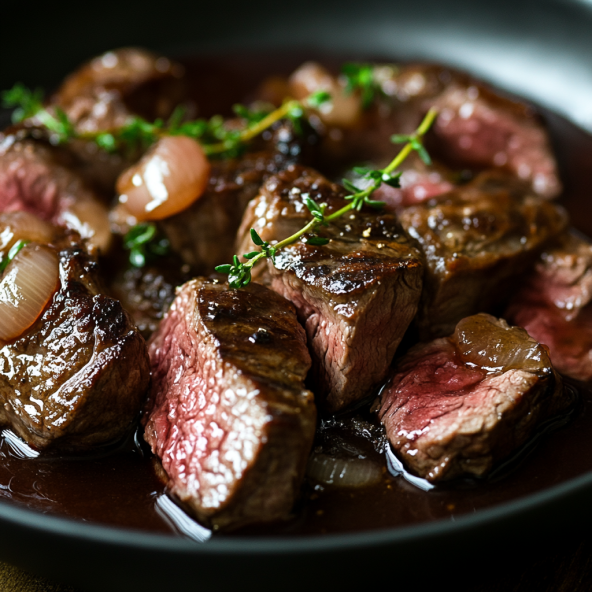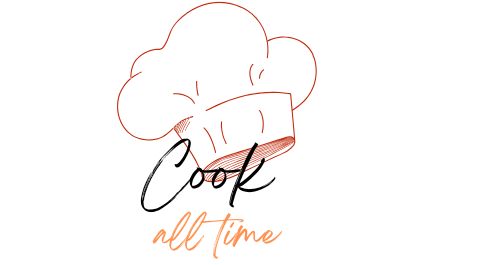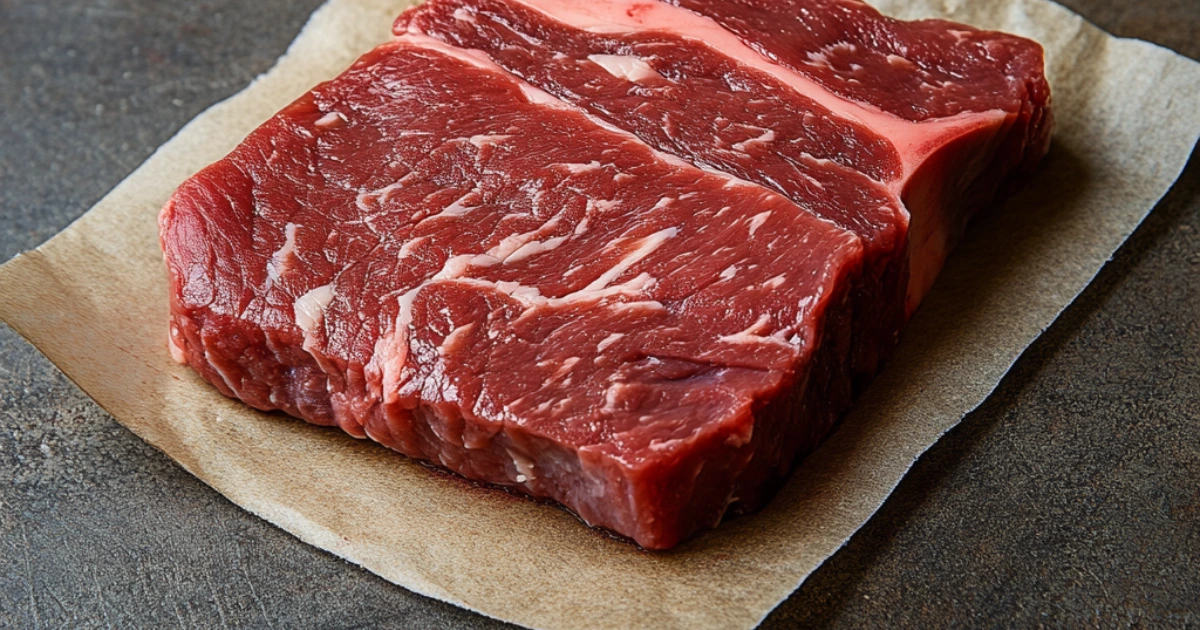Introduction
Bavette steak, also known as flap steak, is a highly flavorful and versatile cut of beef that comes from the lower abdominal area of the cow, near the flank. This lesser-known yet prized cut is cherished for its rich, beefy taste, tender texture when cooked properly, and affordable price compared to premium steaks like ribeye or filet mignon.
The word bavette originates from French, meaning “bib,” referring to the steak’s long, thin shape. It is a popular choice in French and Latin American cuisine, often used in dishes that highlight bold seasonings and quick cooking methods such as grilling, pan-searing, or stir-frying.
Despite its lower cost, bavette steak delivers a dining experience comparable to more expensive cuts. It’s particularly loved for its ability to absorb marinades and pair well with a variety of flavors, making it an excellent choice for steak enthusiasts and home cooks alike.
In this guide, we’ll explore everything about bavette steak—from its origins and characteristics to cooking tips and recipes to help you make the most of this delicious cut.
Table of Contents
What is Bavette Steak?
Bavette steak is a cut of beef taken from the lower chest or abdominal area of the cow, specifically from the flank. The term “bavette” comes from the French word for “bib,” which refers to the cut’s shape and location.
Characteristics
- Flavor: Deep, rich, and beefy.
- Texture: Tender when cooked properly but slightly coarse due to its grain.
- Shape: Long, flat, and relatively thin compared to other cuts.
Because of its unique characteristics, steak is a favorite among chefs and home cooks looking for an affordable yet delicious cut of meat.
How Bavette Steak Differs from Other Cuts
While Bavette steak is often compared to flank steak or skirt steak, there are notable differences that set it apart.
Key differences:
- Location: Bavette comes from the bottom sirloin, whereas flank steak comes from the abdominal muscles, and skirt steak is from the diaphragm.
- Grain: Bavette has a looser grain, making it slightly more tender.
- Flavor: It offers a richer, beefier taste than flank or skirt steak.
- Thickness: Bavette is generally thinner and cooks faster.
Understanding these differences can help you choose the right cut for your recipe and ensure the best cooking results.
The Best Way to Prepare Steak
To make the most of Bavette steak’s rich flavor and tender texture, it’s important to use the right preparation techniques.
Preparation tips:
- Tenderize: Lightly tenderize the steak using a mallet or by scoring it with a knife.
- Marinate: Enhance the flavor and break down the grain by marinating for at least 30 minutes.
- High-heat cooking: Sear steak on high heat for a crispy crust while keeping the inside juicy.
Grilling, pan-searing, or broiling are excellent methods for cooking this cut to perfection.
Looking for side dishes to complement your steak? Pairing it with Bob Evans mashed potatoes can provide a creamy and comforting balance.
Marinades and Seasoning
Bavette steak pairs beautifully with a wide range of marinades and seasonings, allowing you to customize its flavor profile.
Marinade ideas:
- Classic garlic and herb: Olive oil, garlic, rosemary, and thyme.
- Asian-inspired: Soy sauce, ginger, sesame oil, and a touch of honey.
- Zesty citrus: Lemon or lime juice, chili flakes, and cumin.
Seasoning tips:
- Keep it simple with salt and pepper to let the steak’s natural flavor shine.
- Add a rub of smoked paprika or crushed black pepper for an extra kick.
Marinating not only enhances the taste but also helps tenderize the meat, ensuring every bite is packed with flavor.
Cooking Times and Temperature Guidelines
Achieving the perfect doneness for steak depends on precise cooking times and temperatures.
Cooking guidelines:
- Rare: Cook to an internal temperature of 125°F (about 2-3 minutes per side).
- Medium-rare: 130-135°F (3-4 minutes per side).
- Medium: 140-145°F (4-5 minutes per side).
- Well-done: Not recommended, as it can make the steak tough.
Tips for success:
- Use a meat thermometer to ensure accuracy.
- Always rest the steak for 5-10 minutes after cooking to allow the juices to redistribute.
Following these guidelines will help you achieve a juicy, tender steak every time.
Serving Suggestions
Once your steak is perfectly cooked, serving it with complementary sides and sauces can elevate your meal.
Slicing tips:
- Always slice against the grain to enhance tenderness.
- Cut into thin slices for optimal texture.
Side dishes:
- Mashed potatoes: Creamy and buttery, they balance the steak’s richness.
- Grilled vegetables: Add a smoky flavor that pairs perfectly with the meat.
- Salads: A light arugula or spinach salad provides freshness.
Sauces:
- Chimichurri: A tangy herb sauce that complements steak beautifully.
- Red wine reduction: Adds a rich, sophisticated touch.
These serving suggestions ensure a well-rounded, restaurant-quality meal.
Nutritional Benefits
In addition to its flavor and versatility, Bavette steak offers several nutritional benefits, making it a great addition to a balanced diet.
Key nutritional highlights:
- Protein: High in protein, essential for muscle repair and growth.
- Iron: Supports energy production and oxygen transport in the body.
- B vitamins: Contains B12 and B6, which promote brain and nerve health.
- Low in fat: Compared to some other cuts, Bavette is relatively lean.
Including steak in your diet allows you to enjoy its delicious taste while benefiting from its rich nutrient profile.
Where to Buy
Finding high-quality Bavette steak is crucial for fully enjoying its rich flavor and tender texture. Moreover, this cut of meat is becoming increasingly accessible through specialty stores and online platforms.
Where to shop:
- Local butcher shops: A great source for fresh, high-quality cuts, often sourced from local farms.
- Specialty meat markets: These often carry steak and other unique cuts.
- Online retailers: Trusted websites like Omaha Steaks or Crowd Cow offer delivery options for premium steak.
Tips for buying:
- Look for bright red meat with good marbling.
- Check for certifications like grass-fed or organic, depending on your preference.
- Ask your butcher for recommendations if you’re unsure about the cut.
Buying from reputable sources ensures you get the best steak for your recipes.
Storing and Freezing
Proper storage and freezing of Bavette steak preserve its quality and flavor, ensuring you can enjoy it later without compromising taste.
Storing tips:
- Refrigerate: Store fresh steak in the fridge at 32-40°F and use it within 3-5 days.
- Wrap tightly: Use airtight packaging or vacuum seal to prevent air exposure.
Freezing tips:
- Prep before freezing: Pat the steak dry and wrap it in plastic wrap or freezer paper.
- Use a freezer bag: Place the wrapped steak in a zip-top freezer bag, removing as much air as possible.
- Label: Mark the bag with the date to track storage time.
When properly frozen, steak retains its quality for up to 6 months. Always thaw in the refrigerator for best results.
Recipes You Must Try
The versatility of Bavette steak makes it perfect for a wide range of recipes. Its rich flavor and tender texture shine in various dishes, whether grilled, seared, or slow-cooked.
Must-try recipes:
- Grilled : Marinate with garlic, olive oil, and rosemary, then grill to medium-rare perfection.
- tacos: Slice thinly and season with chili powder, cumin, and lime juice for a flavorful taco filling.
- Stir-fried : Toss with soy sauce, ginger, and vegetables for an Asian-inspired dish.
These recipes highlight Bavette steak’s ability to adapt to different cuisines while delivering incredible taste.
In Global Cuisine
Bavette steak has become widely recognized in global cuisine because of its unique flavor and tender texture. Furthermore, its origins and versatility have made it a staple ingredient in many cultural dishes around the world.
Popular global dishes:

- French Bavette à l’échalote: A classic French recipe featuring steak in a shallot and red wine sauce.
- Mexican fajitas: Thinly sliced Bavette paired with sautéed peppers and onions.
- Korean bulgogi: Marinated Bavette cooked over high heat and served with rice and kimchi.
Each preparation emphasizes the steak’s ability to absorb flavors and adapt to diverse culinary traditions.
Tips from Professional Chefs
Professional chefs love working with steak because of its flavor and versatility. Follow their expert advice to elevate your cooking.
Chef-approved tips:
- Marinate generously: Bavette steak’s coarse grain absorbs marinades well, enhancing flavor.
- Cook hot and fast: Use high heat to sear the outside while keeping the interior tender and juicy.
- Slice against the grain: This ensures tenderness and prevents chewiness.
- Rest the steak: Let it rest for 5-10 minutes after cooking to retain its juices.
By applying these tips, you can achieve restaurant-quality results with your steak dishes.
FAQs:
1. What is Bavette steak?
steak, also known as flap steak, is a flavorful cut from the cow’s lower sirloin.
2. Is Bavette steak the same as flank steak?
No, while similar, Bavette is more tender and has a looser grain than flank steak.
3. What’s the best way to cook Bavette steak?
Grilling or pan-searing are ideal methods, as they enhance the steak’s natural flavor.
4. Can you freeze Bavette steak?
Yes, when properly wrapped and stored, it can be frozen for up to 6 months.
5. Is Bavette steak expensive?
It’s relatively affordable compared to premium cuts like ribeye or filet mignon.
6. What does steak taste like?
It has a rich, beefy flavor and tender texture when cooked properly.
Why Bavette Steak is Worth the Hype
Bavette steak provides an ideal combination of flavor, tenderness, and affordability. In addition, its excellent ability to absorb marinades and adapt to diverse cuisines has made it a popular choice for both home cooks and professional chefs.
Reasons to love:
- Affordability: A budget-friendly option with premium taste.
- Versatility: Perfect for grilling, pan-searing, or slow-cooking.
- Flavor: Rich, beefy taste that enhances any recipe.
For those seeking a high-quality yet approachable cut of meat, Bavette is truly worth the hype.
Conclusion
In conclusion ,Bavette steak is a cut that combines affordability, flavor, and versatility, making it a must-try for any meat lover. Whether you’re exploring its global culinary applications, mastering chef-level cooking techniques, or simply enjoying its rich taste, steak is sure to impress.
By following proper storage, preparation, and cooking tips, you can make the most of this unique cut of meat. From tacos to French-inspired dishes, Bavette steak promises a flavorful experience that’s easy to achieve in your kitchen. Embrace the Bavette steak experience and elevate your meals to the next level.


2 thoughts on “Bavette Steak: The Ultimate Guide to This Flavorful Cut”